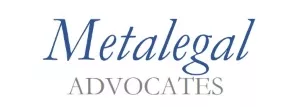The banking sector plays a pivotal role in economic growth by providing vital financial support through loans. However, the escalating issue of Non-Performing Assets (NPAs) poses a significant challenge to this sector. NPAs signify loans where borrowers fail to meet repayment obligations, leading to severe repercussions. This article explores the consequences borrowers face when loans transition into NPAs, including being declared wilful defaulters, facing fraud declarations, and undergoing legal recovery proceedings. Additionally, it delves into the recovery process through the SARFAESI Act and Debt Recovery Tribunal (DRT) in India, recovery from guarantors, potential criminal implications, and money laundering investigations. This knowledge equips both borrowers and lenders to make informed decisions, manage loan defaults effectively, and maintain a healthy financial landscape.
Introduction
The banking sector assumes a critical role in fostering economic growth by providing essential financial assistance through loans. However, a persistent challenge in this domain arises in the form of Non-Performing Assets (NPAs), also recognized as non-performing loans (NPLs). NPAs signify loans or advances granted by banks or financial institutions that have ceased to generate interest income or principal repayment. Put simply, an NPA represents a loan or credit facility where the borrower has been unable to fulfil repayment obligations within the stipulated period, typically set at 90 days.
Within the global financial landscape, there has been a notable upsurge in non-performing assets (NPAs), contributing to significant financial distress for lenders. NPAs encompass loans or advances provided by banks or financial institutions that have ceased to generate interest income or principal repayment. In simpler terms, an NPA denotes a loan or credit facility wherein the borrower has failed to repay the borrowed amount within the specified period, typically 90 days. This article aims to delve deeper into the potential consequences borrowers may encounter when their loans transition into NPAs.
Possible Outcomes
a. Wilful defaulter declaration
The term "wilful defaulter" refers to a borrower who has intentionally and deliberately defaulted on their repayment obligations towards a lender, despite having the means to repay the debt. In other words, it is a classification given to individuals or entities who have the ability to repay their loans but choose not to do so.
Being declared a wilful defaulter can have serious consequences for an individual or a company. They are as follows:
-
Legal Proceedings: Once declared a wilful defaulter, the lender or financial institution can initiate legal proceedings against the defaulter to recover the outstanding debt. This may include filing a civil lawsuit or initiating arbitration proceedings. Such legal actions can be time-consuming and costly for both parties involved.
-
Credit Score and Creditworthiness: Being declared a wilful defaulter can severely impact your credit score and creditworthiness. Credit bureaus maintain records of such defaults, and this information can remain on your credit report for a significant period, typically several years. It becomes challenging to obtain loans or credit cards in the future, and if you do manage to get credit, it may come with higher interest rates or stricter terms.
-
Reputation Damage: Being labelled as a wilful defaulter can damage your personal or business reputation. It may affect your credibility in future financial transactions and make it difficult to establish trust with lenders, suppliers, and business partners. Rebuilding trust and restoring your reputation can be a lengthy process.
b. Fraud declaration
In the event that fraudulent activities, such as the misrepresentation of facts or falsification of documents, are discovered during the loan assessment process or subsequent investigations, the lender reserves the right to declare the borrower as a fraudster. Here are some potential legal consequences of fraudulent actions in loan default:
-
Civil Lawsuits: The lender retains the option to initiate a civil lawsuit against the borrower to reclaim the outstanding loan amount. The lender's case can be substantially strengthened if they can present evidence of fraudulent actions, such as the intentional misrepresentation or concealment of assets. In such instances, the borrower may be held responsible for the remaining debt, in addition to any damages incurred as a result of the fraudulent conduct.
-
Criminal Charges: In certain circumstances, fraudulent actions related to loan default can lead to criminal charges. The specific charges pressed depend on the nature and severity of the fraud, as well as the jurisdiction. Possible criminal charges may include fraud, embezzlement, forgery, or identity theft. If convicted, the borrower such as fines, restitution orders, or even imprisonment, depending on the laws of the jurisdiction involved.
-
Asset Seizure: Upon successfully proving fraudulent actions, the lender has the right to pursue legal remedies in order to recover their funds. This may involve obtaining a judgment against the borrower and seeking asset seizure or garnishment. The court may authorize the sale of the borrower's assets to satisfy the outstanding debt.
c. Recovery Proceedings
Legal recovery proceedings for a loan default involve the lender resorting to legal action to recover the outstanding amount from the borrower. Here are the typical steps involved in the legal recovery process:
i. SARFAESI Act:
SARFAESI Act stands for the Securitization and Reconstruction of Financial Assets and Enforcement of Security Interest Act, 2002 is an Indian law that grants banks and financial institutions the authority to recover their NPAs without court intervention. The act provides a framework for enforcing security interests in cases of default by borrowers.
Outlined below is a general overview of the recovery proceedings under SARFAESI:
-
Issuance of Demand Notice under section 13(2): In the event of loan default, the bank or financial institution can issue a demand notice to the borrower, requiring repayment of the outstanding dues within 60 days. The notice must specify the amount due, the secured assets, and the borrower's rights to contest the notice. If the borrower raises objections or representations, the bank must respond within fifteen days, providing reasons for non-acceptance.
-
Possession Notice: Should the borrower fail to comply with the demand notice, the bank can take possession of the secured assets after issuing a 30-day notice to the borrower. The possession notice must include details of the secured assets to be seized.
-
Sale of Assets: Once the bank has taken possession of the assets, it can sell or lease them to recover the outstanding dues. The sale can be conducted through a public auction, private treaty, or any other recognized mode. The proceeds from the sale are utilized to recover the dues, and any surplus amount is returned to the borrower.
ii. Debt Recovery Tribunal (DRT):
DRT is a specialized legal forum in India that handles cases related to the recovery of debts due to banks and financial institutions. Established under the Recovery of Debts and Bankruptcy Act, 1993, the DRT aims to provide an expeditious and effective mechanism for debt recovery. The DRT possesses extensive powers to summon witnesses, examine documents, and conduct inquiries to ascertain the borrower's liability. It can also issue orders for the attachment and sale of the borrower's assets to recover the debt. Decisions made by the DRT can be appealed before the Debts Recovery Appellate Tribunal (DRAT), which acts as the appellate authority with the ability to confirm, modify, or overturn DRT orders.
d. Recovery from personal or corporate guarantors
When a borrower defaults on a loan, lenders often rely on personal or corporate guarantors who have pledged their assets or creditworthiness to secure the loan. In such cases, if the borrower fails to repay the loan, the lender can pursue the guarantors for the recovery of the outstanding debt.
In certain situations, the lender may choose to negotiate a settlement with the guarantor. This could involve restructuring the debt, agreeing to a repayment plan, or accepting a reduced amount as a full settlement. Settlement negotiations can be beneficial for both parties, as they can avoid lengthy and costly legal proceedings.
e. FIR/Criminal Complaint
Typically, a loan default is generally considered a civil matter rather than a criminal offence. However, there may be certain circumstances where a loan default can lead to criminal charges. If the lender can establish that the borrower intentionally deceived or defrauded them in obtaining the loan, or if there is evidence of criminal intent such as providing false information or forging documents, the lender may have grounds to file a criminal complaint.
f. Money Laundering/ ECIR proceedings
Money laundering investigations in loan default cases typically arise when there are suspicions that the defaulted loan funds were derived from illegal activities, such as fraud, embezzlement, or corruption. This could involve deliberate misrepresentation of financial statements, false documentation, or diversion of loan funds for illicit purposes.
Financial institutions, including banks, have a responsibility to implement strong anti-money laundering (AML) measures. They are required to conduct due diligence on customers, monitor transactions for suspicious activities, and report any suspicious transactions to the relevant authorities. If a bank or financial institution suspects money laundering in a loan default case, they may file an ECIR to initiate a money laundering investigation.
If sufficient evidence is found to support money laundering charges, the individuals involved may face criminal prosecution. The penalties for money laundering vary by jurisdiction but typically include imprisonment, fines, and asset forfeiture.
Conclusion
When loans become non-performing assets (NPAs), both borrowers and lenders face a range of potential outcomes that can have significant financial and legal implications. It is of utmost importance for borrowers to fulfil their loan obligations, while lenders must diligently exercise their rights through the legal avenues at their disposal. By gaining an understanding of these potential outcomes, borrowers and lenders can make informed decisions and take appropriate actions to mitigate the risks associated with loan defaults and NPAs.
It is crucial to adopt a proactive approach in managing loan repayments to avoid the potentially severe consequences of defaulting on loans. Seeking professional advice and exploring available options to effectively manage debt and financial obligations is highly advisable.
By staying informed, exercising responsibility, and taking timely actions, borrowers and lenders can navigate the challenges posed by loan default and work towards maintaining a healthy and sustainable financial landscape.
The content of this article is intended to provide a general guide to the subject matter. Specialist advice should be sought about your specific circumstances.

